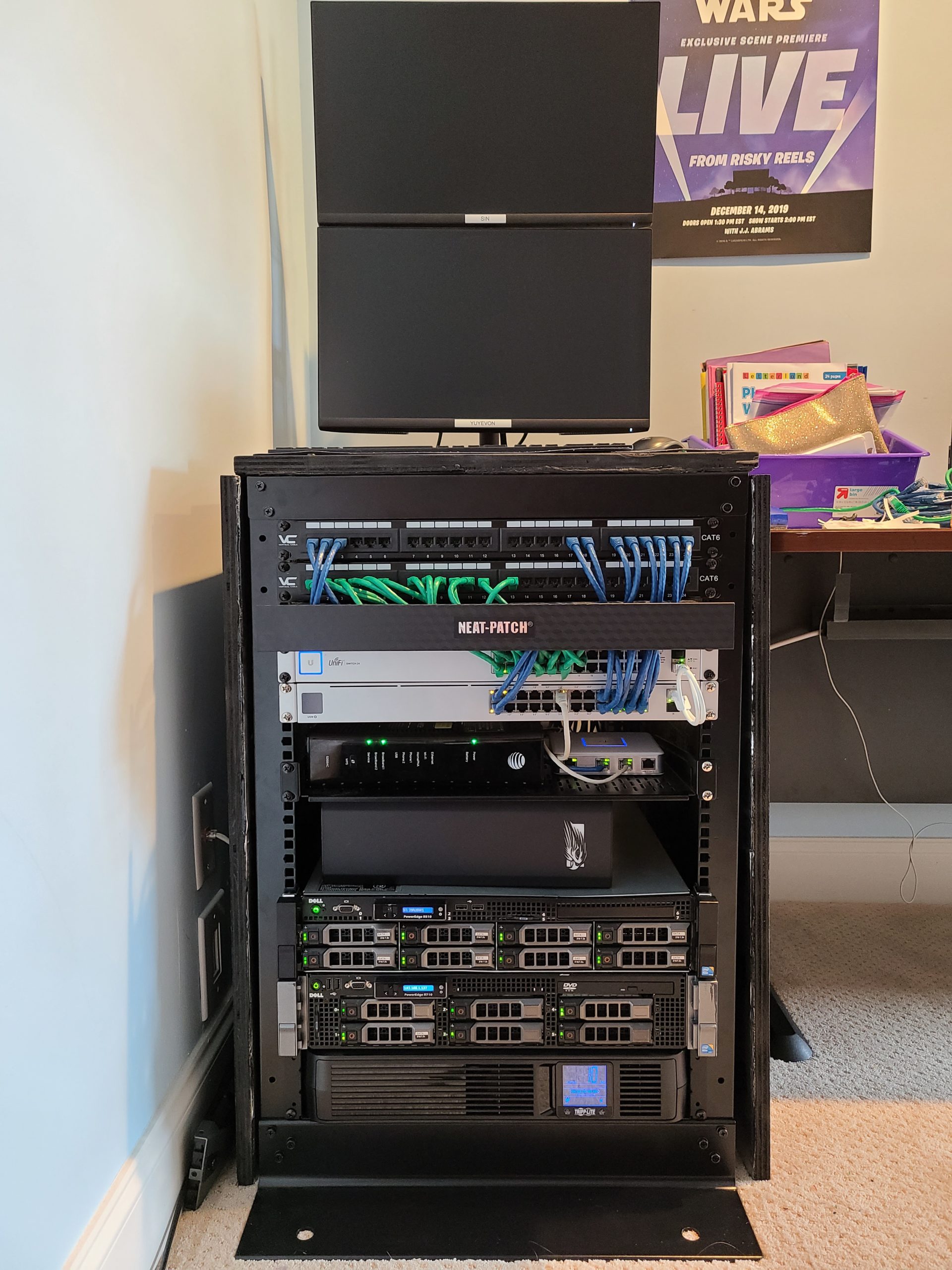
Home Network Lab
One of the ways I’ve been keeping myself busy during the pandemic is by building out my home lab and learning what I can about networking and servers.
As I started to plan out what I was going to be using this equipment for I searched for gear that was both affordable and easy to setup. I grabbed a used Dell PowerEdge R710 with 128GB of RAM to setup a bunch of VMs on and an incorrectly sized network rack that just wasn’t long enough to support a 30″+ server (I replaced this later). I had also decided on jumping into using Ubiquiti gear for my network. I had used Cisco Meraki gear at work previously but their prices are geared towards enterprise customers and that wasn’t going to work for me.
My home already had ethernet cable run through it so I purchased a Ubiquiti 24 port switch and a Ubiquiti Security Gateway.
Here is what it looked like when I first started setting everything up:

After getting everything wired up on the rack I installed Windows Server 2016, set it up as a domain controller then downloaded the Ubiquiti Controller software. I was pleased with how easy it was to get going with Ubiquiti and if you’re reading this and on the market for a prosumer network setup, I can highly recommend Ubiquiti.
I was also using a couple of random routers I had laying around as access points along side the Ubiquiti gear but I was having problems with connectivity and wasn’t able to monitor the wireless traffic through the Controller. So my next purchase was 2 Ubiquiti AC Pro APs. I setup one for Upstairs and one for Downstairs which would load balance the 30 some odd wireless devices my family has between us and allow for roaming to auto connect us to the stronger signal as we moved around the house.
My next task for this project was to clean up the giant mess of wires coming into the front of the rack. I grabbed a 24 port patch panel and a Neat-Patch cable hider to untangle my network cable nightmare. Here are the results:

After several months of using this setup I decided I needed an additional server for some projects I was working on. I went on Amazon and grabbed a used Dell R510 which had 8 drive bays, allowing me to add quite a bit of storage without disrupting my RAID arrays on the main server. I also needed the additional processing power since I had created several VMs on the R710 and they were using up a lot of the CPU cycles.
Well, adding the new server made me realize that I would also need to replace the rack that I had incorrectly sized when I started all of this so I also picked up a new 15U, 4 post server rack. Server racks are surprisingly expensive but since you’ll more than likely add to it as time goes on I suggest getting a larger U size than what you initially need.
When my wife ended up working from home they sent her a VOIP phone that only worked with POE but my current switch setup couldn’t accommodate so it was the perfect time to grab another 24 port POE Ubiquiti switch. I also wanted to keep it from getting disorganized so I picked up another patch panel and here is the current setup:

I was running everything in that rack as headless but I ran into some issues a couple of times where RDP wasn’t working correctly so I setup a couple of monitors and a small USB KVM to control them locally.
In the future I plan to add a Ubiquiti Dream Machine Pro to replace the Security Gateway. This will allow me to enable host intrusion detection without losing a ton of throughput for my bandwidth and also run Unify Protect (Ubiquiti’s security camera controller). I’d also like to replace the Dell servers with some more powerful and newer models as well as upgrade the UPS to something more robust.
I’ve learned quite a bit so far after setting all this up and I’ll continue to improve my skills as time goes on. If setting up your own server/home network lab is something you’re interested in feel free to contact me and I’d be happy to help get you started.